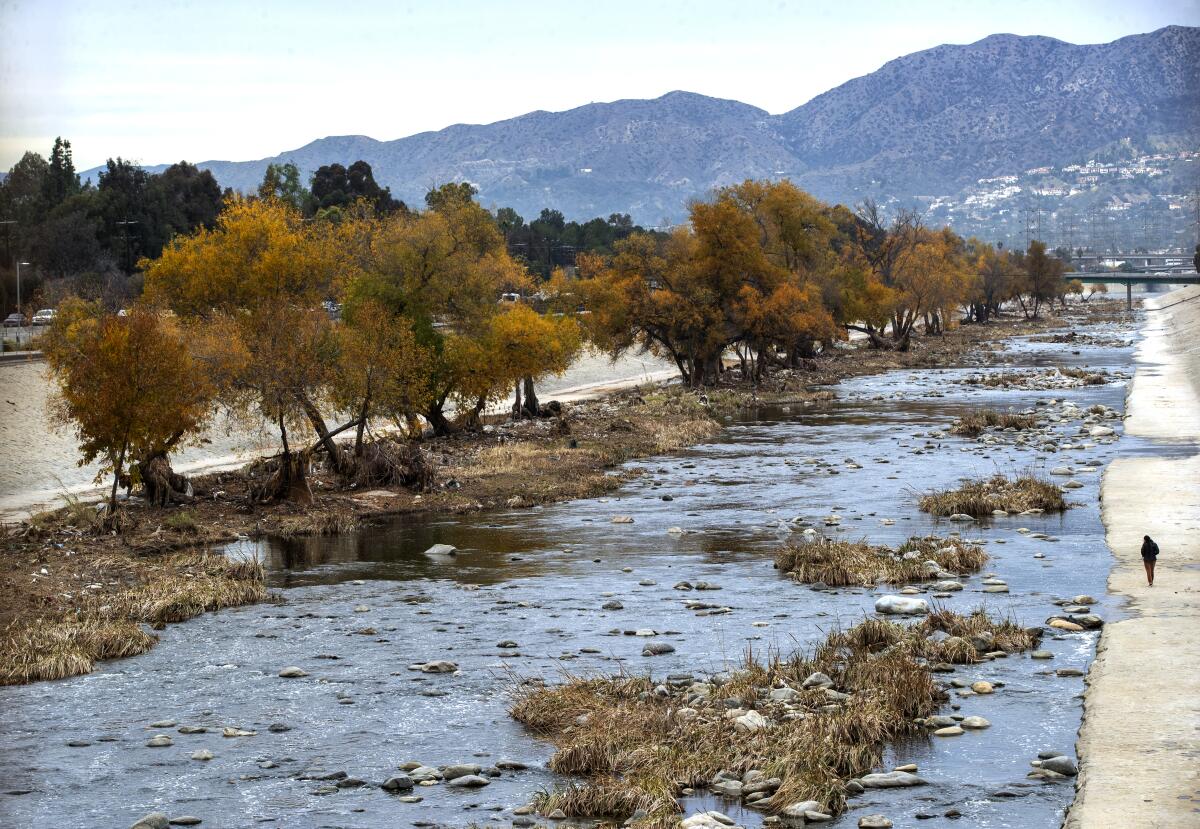Letters to the Editor: You might not notice, but L.A. is making major progress on storing water

- Share via
To the editor: I am disappointed by the imbalanced framing in the article analyzing the amount of money spent by Los Angeles County on stormwater capture after voters approved Measure W in 2018. My organization, Heal the Bay, supported Measure W for equitable, multibenefit projects that clean up water while creating green space.
Multiple public bodies vote on projects to ensure responsible and equitable spending. This innovative program has never existed before, and it requires time to establish a process that includes deep community engagement.
Projects focus on water quality because we have 210 impaired water bodies in L.A. But projects are also scored on factors like water supply, community benefits and green solutions.
Since 2020, $623 million from the Los Angeles County Safe Clean Water Regional Program has been allocated to new infrastructure projects over the next five years, representing nearly $1 billion in total investments thanks to the program’s requirements for leveraged funding.
We may not see projects in the ground yet, but that sure looks like progress to me.
Annelisa Moe, Santa Monica
The writer is a water quality scientist at Heal the Bay.
..
To the editor: Thanks to The Times for its attention to stormwater collection.
In December, all of us taxpayers with buckets in our showers watched with dismay as our winter rainwater washed into the ocean, yet again. I wondered then what had happened to the money we allocated to save this water through Measure W.
Here’s a plan: Let’s put in parallel channels of underground pipes and tunnels along our existing stormwater channels such as the L.A. River. Much like a bathtub with an overflow drain at the top, the channel could divert floodwater all along the way.
These pipes could ferry that water to our reservoirs, new holding basins or underground tunnels, golf courses, new community cisterns and deep into the aquifer of the San Fernando Valley Groundwater Basin. How hard is that?
Yes, several different cities and people own rights to the Los Angeles River water, but the federal government overrides them all.
Starting in the Great Depression, the Army Corps of Engineers was able to build dozens of dams and pave 200 linear feet of riverbed per day. If the Army Corps of Engineers did it once, it can do it again.
Sarah Starr, Los Angeles






